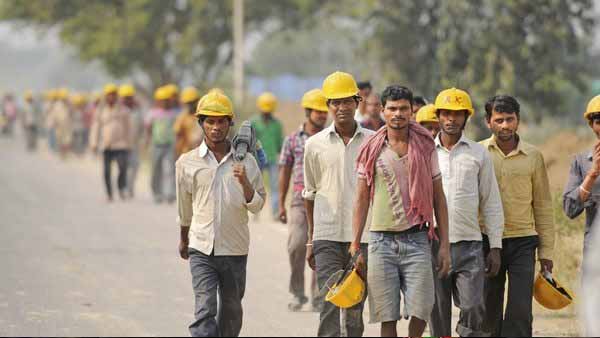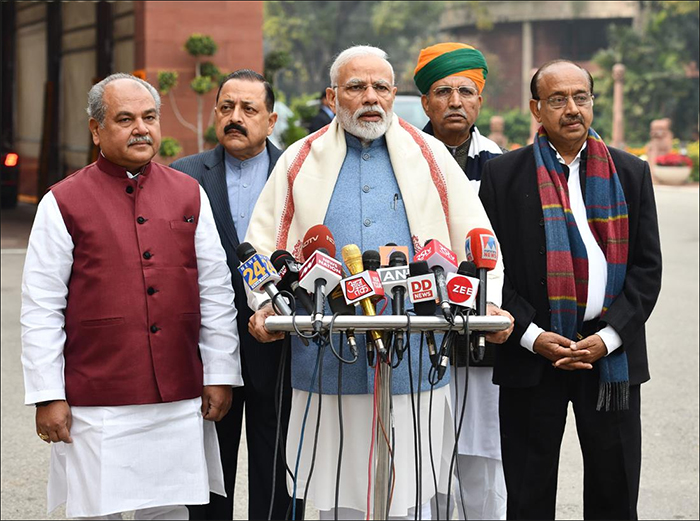The Lok Sabha today passed The Code on Wages Bill, 2019. While opening the discussion for consideration and passing of the Bill, Minister of State (I/C) for Labour and Employment Shri Santosh Kumar Gangwar said that it is a historic Bill which aims to transform the old and obsolete labour laws into more accountable and transparent ones which is need of the hour. As many as 17 present labour laws are more than 50 years old and some of them even belong to pre-independence era.
Among the four Acts being subsumed in The Code on Wages Bill, The Payment of Wages Act, 1936 belongs to pre-independence era and The Minimum Wages Act 1948 is also 71 years old. The Payment of Bonus Act, 1965 and The Equal Remuneration Act, 1976 are also being subsumed in the Code.
He further said that wide consultations were held with trade unions, employers and State governments and tripartite consultations were held on 10th March, 2015 and 13th April, 2015. A draft of Wage Code was made available in public domain through Ministry’s website. Many persons gave their valuable suggestions. The Bill was introduced in last Lok Sabha on 10 August, 2017 and was referred to Parliamentary Standing Committee which submitted its Report on 18th December 2018. Out of 24 recommendations made by standing committee, 17 were accepted by government.
He further said that the Code ensures minimum wages along with timely payment of wages to all the employees and workers. Many unorganized sector workers like agricultural workers, painters, persons working in restaurants and dhabas, chowkidars etc. who were out of the ambit of minimum wages will get legislative protection of minimum wages after the bill becomes an Act. It has been ensured in the bill that employees getting monthly salary shall get the salary by 7th of next month, those working on weekly basis shall get the salary on last day of the week and daily wagers should get it on the same day.
He expressed hope that The Code on Wages will prove to be a milestone and give respectable life to 50 crore unorganized sector workers. The Minister responded to the debate in detail and thanked all the respected members for cooperation in passing the Bill.
The salient features of the Code are as following:
• The Code on Wage universalizes the provisions of minimum wages and timely payment of wages to all employees irrespective of the sector and wage ceiling. At present, the provisions of both Minimum Wages Act and Payment of Wages Act apply on workers below a particular wage ceiling working in Scheduled Employments only. This would ensure “Right to Sustenance” for every worker and intends to increase the legislative protection of minimum wage from existing about 40% to 100% workforce. This would ensure that every worker gets minimum wage which will also be accompanied by increase in the purchasing power of the worker thereby giving fillip to growth in the economy. Introduction of statutory Floor Wage to be computed based on minimum living conditions, will extend qualitative living conditions across the country to about 50 crore workers. It is envisaged that the states to notify payment of wages to the workers through digital mode.
• There are 12 definitions of wages in the different Labour Laws leading to litigation besides difficulty in its implementation. The definition has been simplified and is expected to reduce litigation and will entail at lesser cost of compliance for an employer. An establishment will also be benefited as the number of registers, returns, forms etc., not only can be electronically filed and maintained, but it is envisaged that through rules, not more than one template will be prescribed.
• At present, many of the states have multiple minimum wages. Through Code on Wages, the methodology to fix the minimum wages has been simplified and rationalised by doing away with type of employment as one of the criteria for fixation of minimum wage. The minimum wage fixation would primarily based on geography and skills. It will substantially reduce the number of minimum wages in the country from existing more than 2000 rates of minimum wages.
• Many changes have been introduced in the inspection regimes including web based randomised computerised inspection scheme, jurisdiction-free inspections, calling of information electronically for inspection, composition of fines etc. All these changes will be conducive for enforcement of labour laws with transparency and accountability.
• There were instances that due to smaller limitation period, the claims of the workers could not be raised. To protect the interest of the workers, the limitation period has been raised to 3 years and made uniform for filing claims for minimum wages, bonus, equal remuneration etc., as against existing varying period between 6 months to 2 years.
• It can be said that a historical step for ensuring statutory protection for minimum wage and timely payment of wage to 50 crore worker in the country has been taken through the Code on Wages besides promoting ease of living and ease of doing business.
";


.jpg)